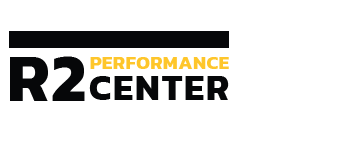

Create Good Habits and Break Bad Habits for Financial Well-Being
Did you ever think about how you form a habit? It is actually a four-step process: cue, craving, response and reward. For example, when you drive by a Starbucks on your way to work (cue), you crave coffee and energy (craving), buy a coffee (response), and satisfy your craving and feel energized (reward). These steps apply to personal finances, as well. Below are some tips to help you establish new, beneficial habits and break bad ones.
Creating Good, Breaking Bad, Financial Habits
If you want to get in the habit of saving money by hitting the grocery store so you can cook more often and avoid overspending by eating out too frequently, try these tips.
Cue: Make It Obvious (Create a Good Financial Habit)
Design your environment. Write down your current habits. Take a look at your food spending for the past six months, identifying unnecessary expenses (like eating out). Next, create a cue to change this behavior: Hang grocery bags on the inside of the front door.
Cue: Make It Invisible (Break a Bad Financial Habit)
Remove the cues of your bad habit from your environment. For example, take an alternate route to work to avoid passing the pricey drive-through coffee bar.
Craving: Make It Attractive (Create a Good Financial Habit)
Pair an activity you enjoy with something you need to do, such as watching your favorite TV show only when cooking.
Craving: Make It Unattractive (Break a Bad Financial Habit)
Highlight the benefits of avoiding your bad habits. For example, remind yourself, “If I don’t go out and buy lunch, I get more time to connect with coworkers in the break room.”
Response: Make It Easy (Create a Good Financial Habit)
Reduce the difficulty of maintaining good habits by prepping your environment. For example, download your grocery store’s app for pickup to the home screen of your phone. Create a grocery list and attach it to the refrigerator. Place plastic food containers in the top drawer.
Response: Make It Difficult (Break a Bad Financial Habit)
Increase the amount of work you need to do to stick with bad habits. So, if you rely on takeout too often, delete all food-delivery apps from your phone.
Reward: Make It Satisfying (Create a Good Financial Habit)
Give yourself a reward when you follow through on a good habit. Use a habit tracker and celebrate the small wins.
For example, place your favorite piece of chocolate in packed lunches. Or if you commit to five consecutive days of packed lunches, order pizza on Friday night.
Reward: Make It Unsatisfying (Break a Bad Financial Habit)
Get an accountability partner to watch your behavior and write a habit contract. Create reminders of the costs of your bad habit—place a photo of your child’s or spouse’s face on the background of your credit cards (as a reminder that you are saving for their future).
Keep in mind that it is more beneficial to make small improvements over time than to launch a large-scale behavior change that is tough to sustain. (the exception being onetime actions that lock in good habits, such as setting up automatic bill pay).
Cravings are a powerful motivator and a natural response to human needs like food, shelter, safety, belonging and sleep. For example, you may crave a burrito because you have a human need to eat. But rather than give in to all cravings, use your human needs to your advantage. So when you experience a craving to shop online, catch yourself, as you may really be trying to satisfy your human need for social belonging.
Design habits that work for you rather than against you. It’s less about willpower and more about how you design good habits. Realizing this will help you succeed on your journey to a healthy financial future.
Resources
Download InfographicMORE SKILLS
